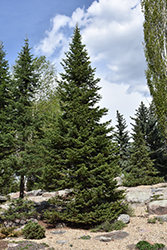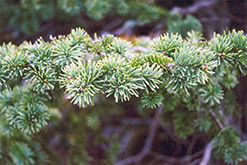Height: 70 feet
Spread: 20 feet
Sunlight:
![]()
![]()
Hardiness Zone: 2b
Other Names: Subalpine Fir, Rocky Mountain Fir
Description:
A common evergreen tree of the Rocky Mountains, good for natural landscapes, tolerates drier conditions; may require special considerations when grown in a home landscape setting
Ornamental Features
Alpine Fir is primarily valued in the landscape for its distinctively pyramidal habit of growth. It has rich green evergreen foliage. The needles remain green throughout the winter. The smooth gray bark adds an interesting dimension to the landscape.
Landscape Attributes
Alpine Fir is an evergreen tree with a strong central leader and a distinctive and refined pyramidal form. Its average texture blends into the landscape, but can be balanced by one or two finer or coarser trees or shrubs for an effective composition.
This is a relatively low maintenance tree, and usually looks its best without pruning, although it will tolerate pruning. It has no significant negative characteristics.
Alpine Fir is recommended for the following landscape applications;
- Vertical Accent
Planting & Growing
Alpine Fir will grow to be about 70 feet tall at maturity, with a spread of 20 feet. It has a low canopy, and should not be planted underneath power lines. It grows at a slow rate, and under ideal conditions can be expected to live for 80 years or more.
This tree does best in full sun to partial shade. It prefers to grow in average to moist conditions, and shouldn't be allowed to dry out. It is not particular as to soil pH, but grows best in sandy soils. It is quite intolerant of urban pollution, therefore inner city or urban streetside plantings are best avoided, and will benefit from being planted in a relatively sheltered location. Consider applying a thick mulch around the root zone in winter to protect it in exposed locations or colder microclimates. This species is native to parts of North America.
Disclaimer - This resource is provided for informational purposes only and does NOT reflect current availability. Inventory varies seasonally, so we cannot guarantee that every plant will be in stock at all times - please contact your favourite GardenWorks location directly for current availability. It does not include our entire inventory of plants, so be sure to visit GardenWorks to see varieties that may not be represented on this list.


